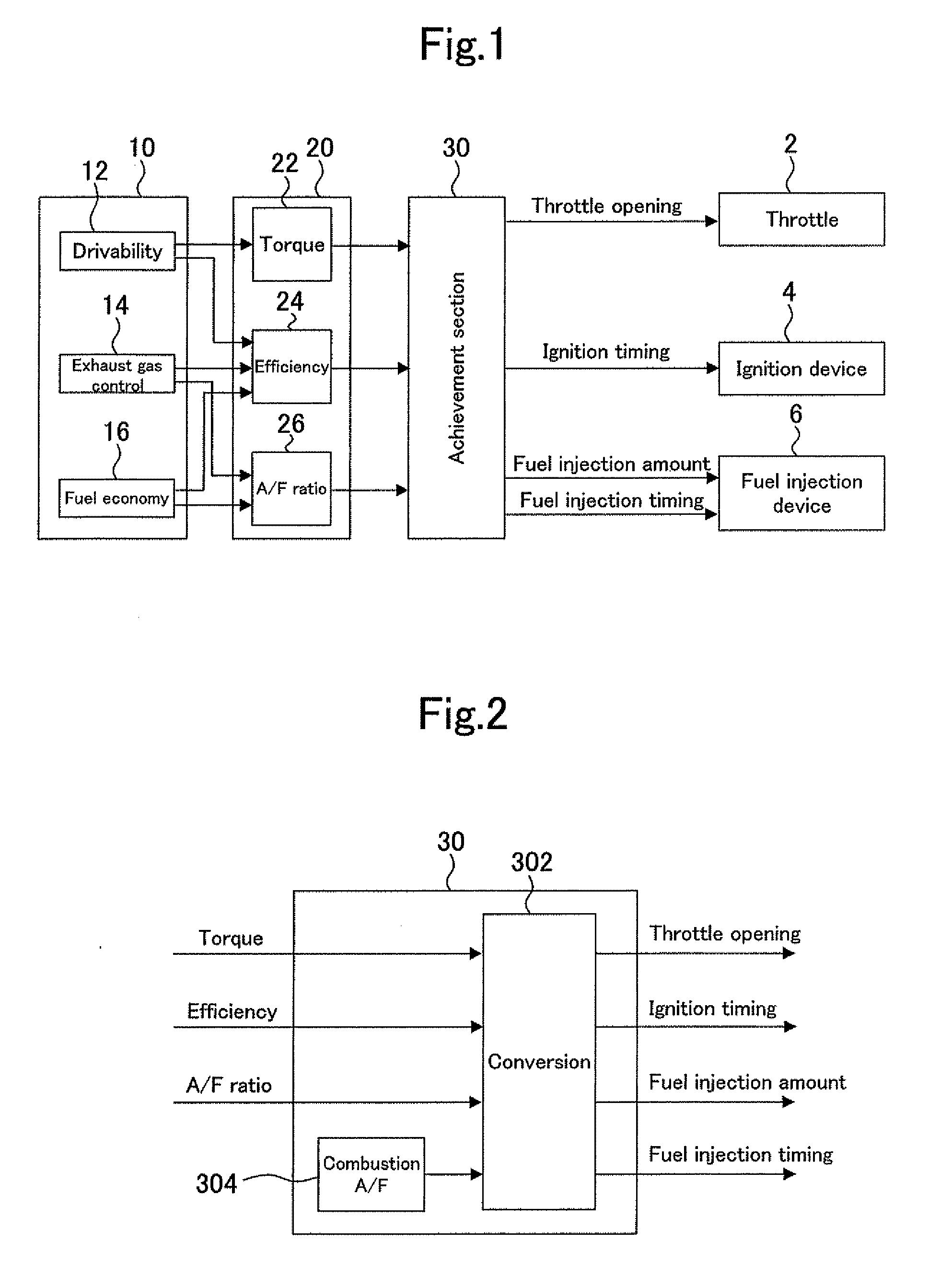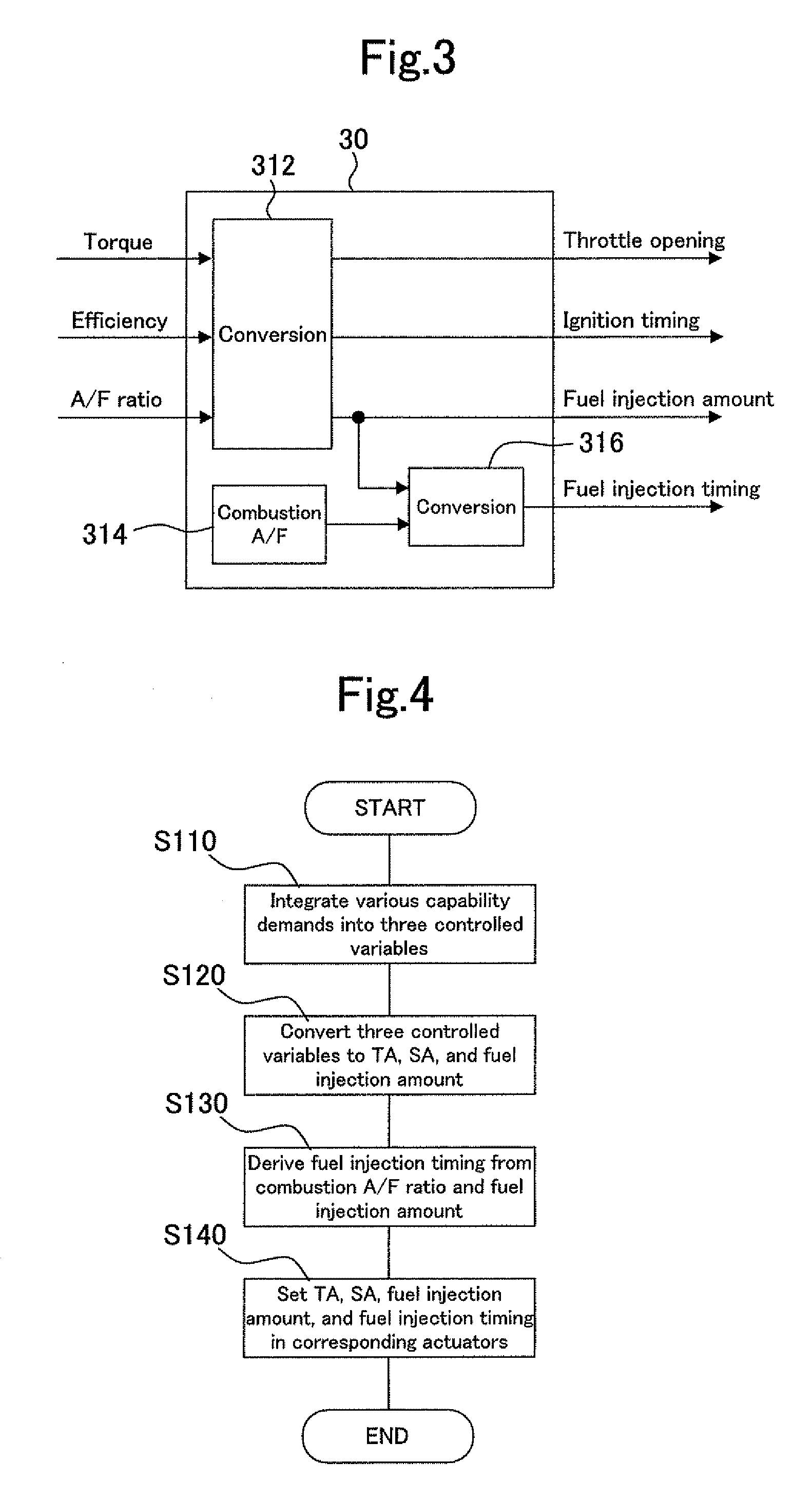Control device for internal combustion engine
a control device and internal combustion engine technology, applied in the direction of electric control, machines/engines, instruments, etc., can solve the problem that the above-mentioned three operation cannot be controlled and adjusted
- Summary
- Abstract
- Description
- Claims
- Application Information
AI Technical Summary
Benefits of technology
Problems solved by technology
Method used
Image
Examples
first embodiment
[0051]A first embodiment of the present invention will now be described with reference to FIGS. 1 and 2.
[0052]First of all, the specifications for an internal combustion engine according to the first embodiment will be described as its prerequisites. The internal combustion engine according to the present embodiment operates while stratified charge combustion occurs. As actuators that control its operation, the internal combustion engine according to the present embodiment includes a throttle 2, which serves as an intake air amount adjustment valve; an ignition device 4, which adjusts the ignition timing; and a fuel injection device 6, which injects fuel directly into a cylinder. The specifications for the internal combustion engine according to the present embodiment are common to the internal combustion engine according to a second embodiment or a third embodiment, both of which will be described later.
[0053]A control device according to the present embodiment is configured as sho...
second embodiment
[0072]A second embodiment of the present invention will now be described with reference to FIGS. 1, 3, and 4.
[0073]The overall configuration of the control device according to the present embodiment is indicated by the block diagram in FIG. 1, as is the case with the first embodiment. The control device according to the present embodiment differs from the control device according to the first embodiment in the configuration and functions of the achievement section 30, which is an element of the control device. FIG. 3 is a block diagram illustrating the configuration of the achievement section 30 according to the present embodiment.
[0074]The achievement section 30 according to the present embodiment includes a conversion section 312, a conversion section 316, and a target combustion A / F setup section 314. In the first embodiment, the conversion section 302 corresponds to an inverse model of the internal combustion engine. In the present embodiment, however, the conversion section 312...
third embodiment
[0082]A third embodiment of the present invention will now be described with reference to FIGS. 1, 5, and 7.
[0083]The overall configuration of the control device according to the present embodiment is indicated by the block diagram in FIG. 1, as is the case with the first embodiment. The control device according to the present embodiment differs from the control device according to the first embodiment in the configuration and functions of the achievement section 30, which is an element of the control device. FIG. 5 is a block diagram illustrating the configuration of the achievement section 30 according to the present embodiment.
[0084]The achievement section 30 according to the present embodiment includes a conversion section 322, a conversion section 326, and a target combustion A / F setup section 324. In the first embodiment, the conversion section 302 corresponds to an inverse model of the internal combustion engine. In the present embodiment, however, the conversion section 322,...
PUM
 Login to View More
Login to View More Abstract
Description
Claims
Application Information
 Login to View More
Login to View More - R&D
- Intellectual Property
- Life Sciences
- Materials
- Tech Scout
- Unparalleled Data Quality
- Higher Quality Content
- 60% Fewer Hallucinations
Browse by: Latest US Patents, China's latest patents, Technical Efficacy Thesaurus, Application Domain, Technology Topic, Popular Technical Reports.
© 2025 PatSnap. All rights reserved.Legal|Privacy policy|Modern Slavery Act Transparency Statement|Sitemap|About US| Contact US: help@patsnap.com



